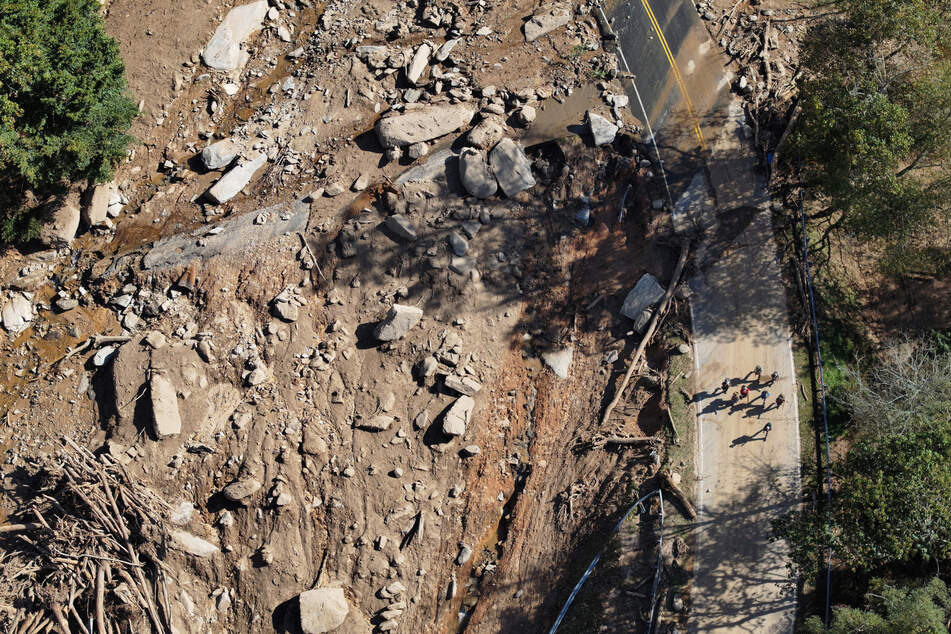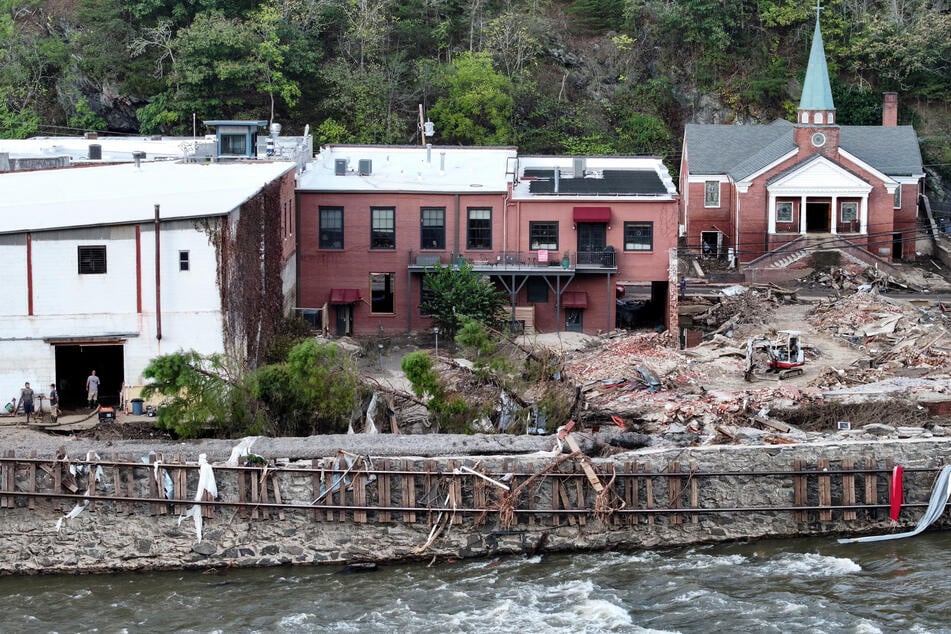Did climate change play a key role in the devastation of Hurricane Helene?
Berkeley, California - Scientists have suggested that climate change may be a significant indirect cause of Hurricane Helene, which claimed more than 100 lives across the East Coast last week.

Scientists have claimed that the excessive rainfall brought by Hurricane Helene last week was likely only possible due to the impact of climate change.
Over the course of three days, Helene moved up the East Coast, causing catastrophic flooding across much of North Carolina, Tennessee, and Virginia and at least 200 deaths.
More than 40 trillion gallons of rain fell on the US over the course of Hurricane Helene's destructive path. Due to its scale, it is now considered one of the biggest storms of recent times.
This excessive rainfall was made "up to 20 times more likely in these areas because of global warming," said a group of three scientists from the Lawrence Berkeley National Laboratory in a statement to CNN.
In a climate analysis published by the scientists, it was found that fossil fuel pollution caused over 50% more rainfall in areas that make up much of Georgia, North Carolina, and South Carolina.
"Our best estimate is that climate change may have caused as much as 50% more rainfall during Hurricane Helene in some parts of Georgia and the Carolinas," scientists Mark Risser, Joshua North, and Michael Wehner said in a statement quoted by USA Today.
Scientists at the National Oceanic and Atmospheric Administration (NOAA) in Tuscaloosa, Alabama, expressed particular concern over the sheer volume of rainfall that fell over the few days that Helene made landfall.
"That's an astronomical amount of precipitation," said NOAA head Ed Clark. "I have not seen something in my 25 years of working at the weather service that is this geographically large of an extent and the sheer volume of water that fell from the sky.”
Hurricane Helene was more than "just a perfect storm"

What made Helene so devastating, though, was the fact that it had stalled just off the southeast coast prior to making landfall, allowing it time to pick up plenty of warm water from the Gulf of Mexico.
"It was not just a perfect storm, but it was a combination of multiple storms that that led to the enormous amount of rain," said Ryan Maue, a former NOAA chief scientist who studied the storm closely.
"That collected at high elevation, we're talking 3,000 to 6000 feet. And when you drop trillions of gallons on a mountain, that has to go down."
The ability for Helene to hold as much water as it did was, according to scientists, only made possible by the combination of multiple weather storm systems coming together, something which was made more likely by climate change-induced global warming.
"We’ve seen tropical storm impacts in western North Carolina," said the scientists from the Lawrence Berkeley National Laboratory. "But these storms are wetter and these storms are warmer."
"There would have been a time when a tropical storm would have been heading toward North Carolina and would have caused some rain and some damage, but not apocalyptic destruction."
Cover photo: AFP/Getty Images/Mario Tama
